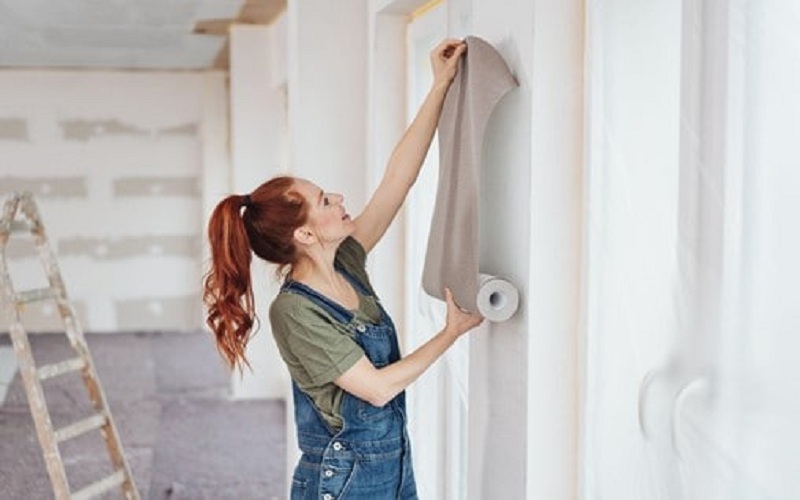
Uses of wallpaper primer
Before applying borders, artwork, or wallpaper, the primer should be consumer-applied to painted or unpainted walls for optimal effects. Both homeowners and installers frequently neglect this vital extra step.
Homeowners often skip this phase since they are unaware it is necessary and less expensive installers omit it to conserve time. On the other hand, Primers reduce air bubbles, facilitate wallpaper hanging, and—above all—make it easier to remove later on.
Measurement, also called priming, aids in readying walls for a fruitful wallcovering application. A Roman wallpaper primer is intended to prepare distinct surface conditions.
These involve primers designed to boost wallpaper strippability, encourage adhesive on surfaces that are difficult to stick to or aid in restoring damaged plasterboard.
Roman wallpaper primer includes biocides to prevent dampness and mould within the bucket and on the exterior layer. Make sure you get off to a good start with Roman wallpaper primer.
What exactly does Wallpaper Primer Do?
Wallpaper Setup
To provide an easier surface for dragging the wallpaper into place, wallpaper primer closes pores in absorbing surfaces. Walls that are flat, matte, untreated, or even painted with an eggshell shine can produce a drag, which renders it more difficult to move and slide wallpaper.
Instead of being instantly incorporated via the wall’s pore sizes, wallpaper primer lets the wallpaper adhesive do its work.
The walls are ready for wallpaper after priming.
Paste for wallpaper is more effective when primed. Papering over open areas like raw drywall, bond substance, powdery flat paint, or hard-to-stick materials like glass, tiles, and panelling calls for extra caution.
“How would you prepare the walls?” will be the first inquiry asked if there is an issue or issue about the setup further on. Before hanging the paper, make sure you apply the right product for the sort of surface you have.
Furthermore, ensure that the wall’s surface is safe, fresh, and dry before priming and wallcovering. Most wallpaper solutions are water-based, so that adherence can be impacted by grease, grime, or peeling paint.
Your papering job might be ruined if your wall texture is not in excellent shape since you might not acquire the right adhesion.
Colour Preventing:
The new wallpaper prevents colour from coming through when priming is applied. This is particularly valid if you have wallpaper on walls that are vividly coloured.
The last thing you would like is to install your gorgeous new wallpaper only to find the previous proprietor’s wall colour, which had a brilliant green tint, peeking through.
The Latex Problem
Given that most wallpaper primers are latex-based, you might be tempted to apply wallpaper straight over walls painted with latex paint. However, latex paint plus latex-based wallpaper priming are not the same thing.
Because latex paint is frequently permeable, the wall may breathe. There’s a good risk the latex paint may lose its integrity and turn mushy, rubbery, or squishy when the wallpaper’s solution comes into touch with it. Additionally, there’s a danger that the glue will damage the drywall below by going straight into the latex paint.
What Primer for walls to apply?
Wallpaper that is starting to peel off the wall when its usable life is over is the very last item you want to occur. You may take immediate action to solve the common causes of installation failure if you are aware of these. The two major causes of a failed wallpaper placement are inadequate adhesive and faulty installation.
There are a few things to take into account while selecting wall primer.
Colour: The colour of the primer is important when painting since darker colours don’t show through as well on tinted primers, which cover current colours more effectively than white primers.
The adhesion: Refer to the technical details for information on how well your primer will stick to the substrate(s) & endure outside factors like moisture and high temperatures.
Area of application: Verify if your pPrimerhardens surfaces or may be used as an additional primer for additional components in your undertaking. It should also be appropriate for usage either inside or outdoors.


